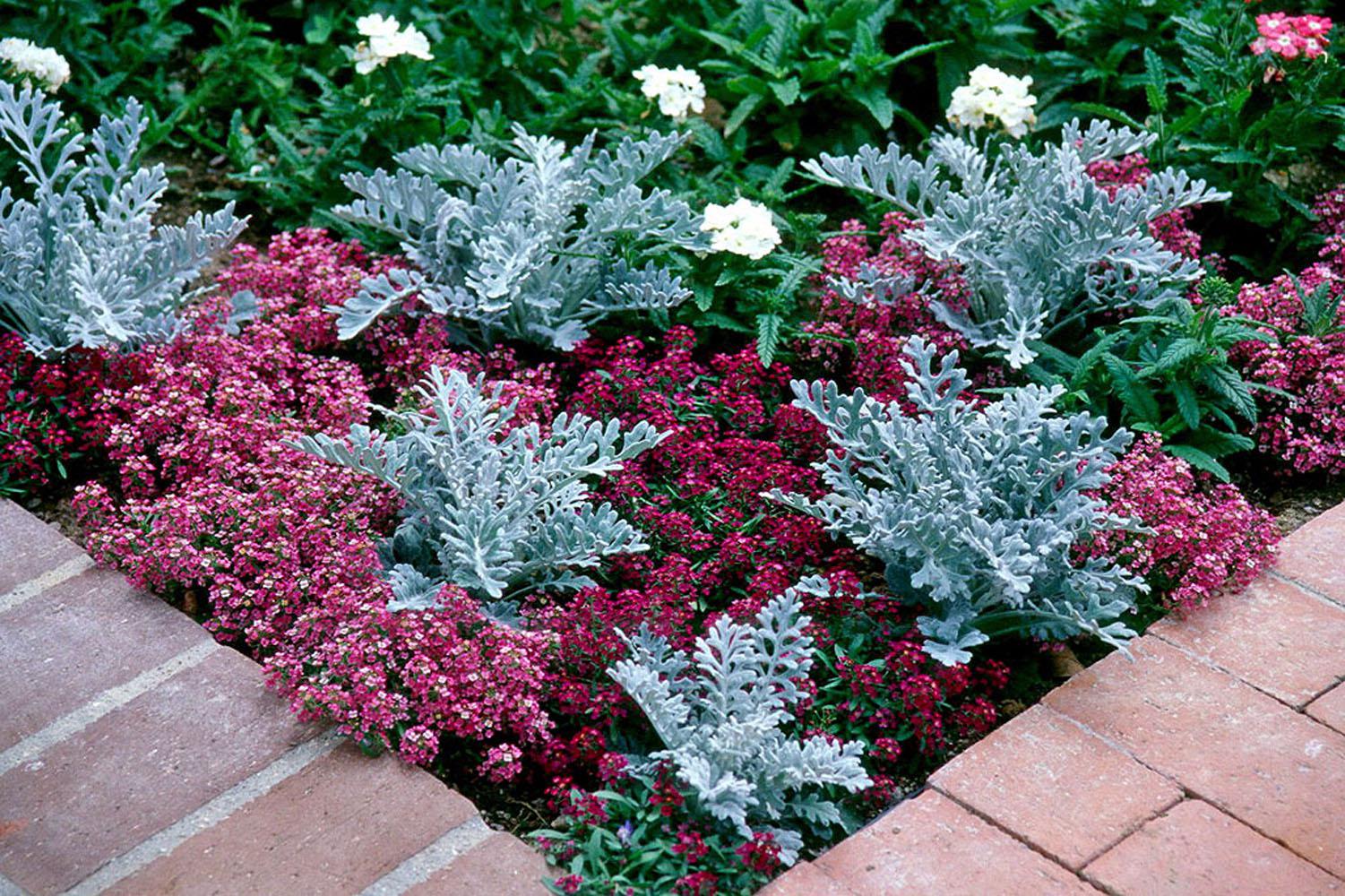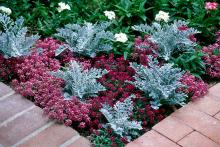Information Possibly Outdated
The information presented on this page was originally released on December 23, 2004. It may not be outdated, but please search our site for more current information. If you plan to quote or reference this information in a publication, please check with the Extension specialist or author before proceeding.
Include gray-leafed plants in '05 gardens
By Norman Winter
MSU Horticulturist
Central Mississippi Research & Extension Center
When choosing plants for borders this spring, strive to vary heights and leaf textures, and don't overlook plants with gray foliage.
In a gardening world dominated by a sea of green, well-placed pockets of plants with silver and gray leaves is ever so striking. We have choices here from perennials, herbs and even shrubs.
While most of us grow these plants for their contrasting foliage, some selections also feature showy blooms. The Bath's Pink dianthus is one such plant. It is useful as a groundcover, looks good most of the year and gives about a month's worth of knock-out blooms.
Another showy gray plant is called artemesia. Though an herb, the artemesia is definitely at home in perennial gardens -- but it is necessary to choose plants that can tolerate the dryness artemesia prefers. The trailing purple lantana montivedensis is a good choice. In the herb garden, santolina, thyme, oregano and rosemary are nice companions.
I have seen some very nice beds where tall artemesias are grown with pink-flowered shrub roses like The Fairy, a polyantha, and as a lower-level plant in front of Pink Simplicity.
For the best success at growing artemesia, choose a site in full sun to partial shade. They are tolerant of poor soils, but good drainage is an absolute must. If drainage is less than perfect, incorporate 3 to 4 inches of organic matter to help loosen the soil and provide aeration.
While preparing the bed, apply 1 pound of a slow-release, 5-10-5 fertilizer per 100 square feet of bed space. Set nursery-grown transplants out at the same depth they were growing in the container.
Artemesia fertilizer requirements are low. Prune to shape and watch for unwanted spreading. They may need to be dug and divided every three or four years. The aromatic foliage can be harvested in early morning and used in a number of ways from repelling moths in the closet to making potpourris, sachets and wreathes.
For the landscape, the hybrid Powis Castle is known for its endurance in our heat and humidity. Silver King A. ludoviciana albula has striking lacy foliage, making it ideal for arrangements. Another variety of the same species, Silver Queen, is not as large but has finer cut foliage.
Catmints, a group of gray to gray-green plants, are often overlooked. Catmints are loved by neighborhood felines and produce flowers as pretty as salvias along with their delightful foliage.
The ideal planting site will receive morning sun and afternoon shade. The plants prefer well-drained beds, so soil preparation is about the same as for the above artemesia. Set out transplants 1 to 2 feet apart and plant at the same depth they are growing in the container. Water and mulch after planting. The plants will develop into a perennial groundcover.
Cut back after blooming and feed with a water-soluble fertilizer or side-dress with a slow release fertilizer. A new flush of growth and flowers often occurs. Plants can become vigorous and spread over or out of boundaries, so prune as needed.
The most common, and many think the prettiest, is the Six Hills Giant catmint. The dark violet flowers called racemes are often 10 to 12 inches long and are borne on plants 2 to 3 feet tall.
Dropmore Hybrid is smaller but not as easy to find. Porcelain has attractive light-blue flowers with blue-gray foliage. Recently I have seen beds with a very pretty variety called Blue Wonder.
Don't forget about other recognized winners like Lamb's Ear, Mexican Bush Sage and Dusty Miller.








